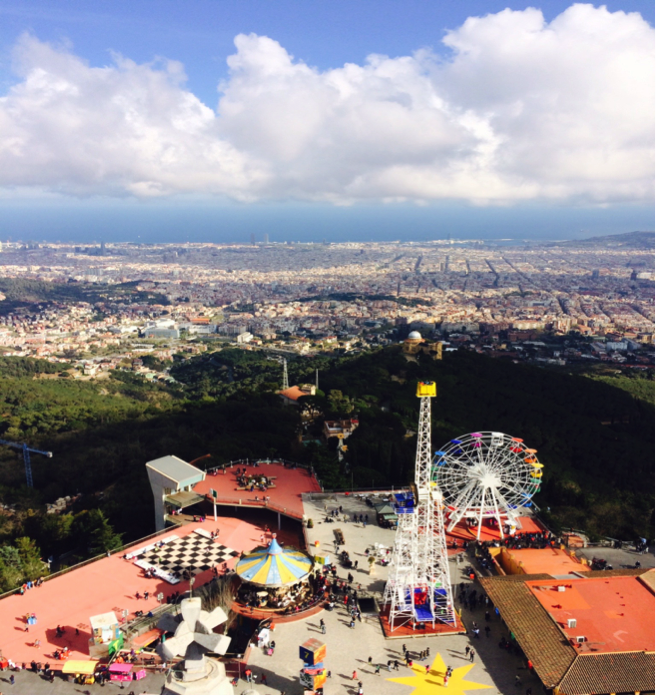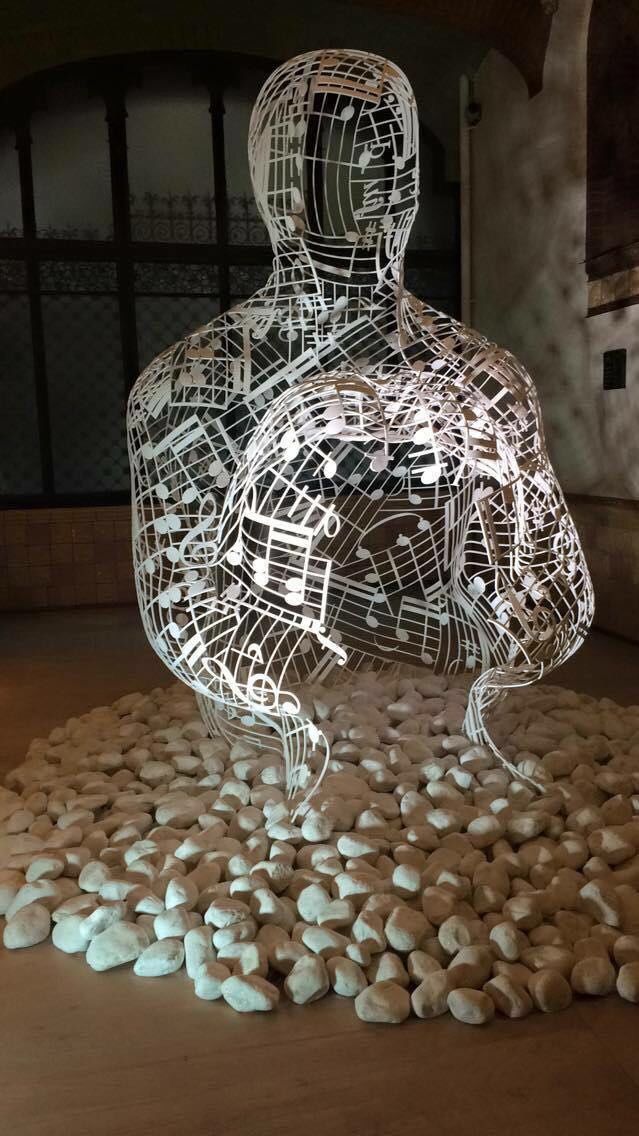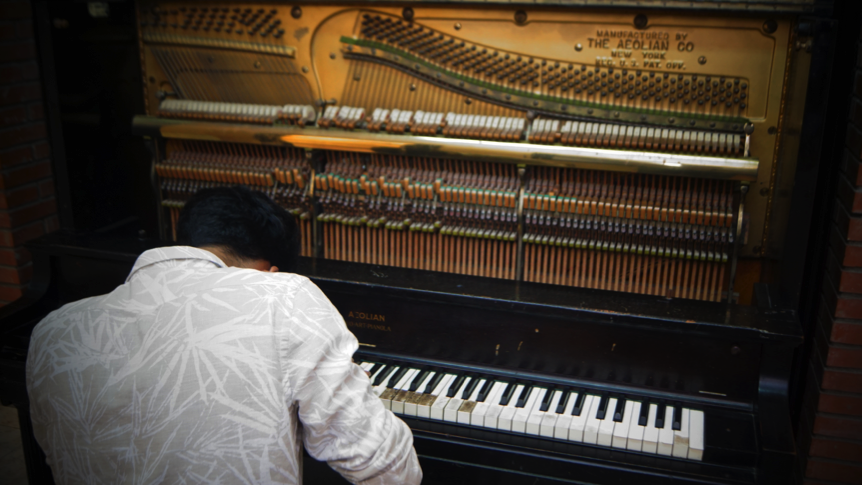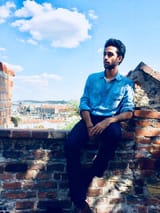Musing in Barçelona

The Catalan capital happens to be one of those cities that slither into your heart with such stealthy and disarming ease, that at times you wonder who slipped you the love potion. The city that has nurtured geniuses like Antoni Gaudi, Alicia de Larrocha, Salvador Dalí and Lionel Messi, has everything you can dream of – sun-kissed beaches, snazzy architecture, a rich gastronomy, sport, jazz and a seductive spontaneity. Wackadoo parties too, if you need it.
While I gawked at Barçelona’s splendour, what struck me most, being a musician, were the artistic delicacies that the city proffers. With its countless bohemian cafes, and concert venues such as the modernist Palau de La Música and the historic opera house Gran Teatre Del Liceu, music is everywhere- in bars and basements, on the streets, in the city’s Placas, and deep within the hearts of people. Celebrated pianists like Maria Joao Pires, Sir Andras Schiff, Nikolai Lugansky, Vladimir Ashkenazy, Leo Genovese and Stefano Bolani, who I saw perfrom live, tour Barçelona regularly.

Besides housing grand art museums like the Museu Nacional d’art de Cataluña, MACBA or the Picasso Museum, which are remarkable and prominent, of course, the city hides much more. Meritorious paintings and sculptures, vibrant graffiti, ornate passageways and fountains lurk in obscure corners of the Barri Gotic, waiting to be discovered. I fathomed why surrealists like Miró and Dalí found inspiration in Barçelona – this place was indeed a waking dream, where laws and limits seemed hazy and distorted.
To add to its dreamy-artsy vibe, the social setting of the city was affective too. Cataluña, which is culturally a very rich and distinct region of Spain, celebrates its own unique traditions. La Diada de Sant Jordi (a cooler version of St Valentine’s Day), Colles Castelleres (human tower makers) and Tió de Nadal (a rather strange Christmas tradition) are some festive events, dear to the people. The region even has its dance form- La Sardana.
Many Catalan people, who are proud of this distinct cultural identity, are resilient in their desire to break away from Spain for several (and possibly justifiable) reasons. I noticed the Pro-independence flag waving hopefully from balconies and rooftops. Tiny bars hosted Catalan poetry recitals on summer evenings. Locals preferred speaking Catalan to Spanish. After chatting with some friends I made, it was clear to me how proudly they guarded their cultural and personal identities. Thus, artists too, sought to preserve their distinct voice, which expressed with originality and fervour, capitalising on their artistic freedom and placating the desire Catalans had for innovative and bold art.
Amidst this cultural and social setting, studying jazz at Conservatori del Liceu, one of the most reputed conservatories in Spain, was like being in the right place at the right time.
Liceu, founded in 1837, offers both a Classical and Modern music program. This opened avenues for me to interact with an eclectic mix of musicians with respect to both teachers and students. Being part of the Berklee College of Music program, my curriculum differed from that of the conservatory, but not drastically. My classes included Ear-Training, Harmony, Improvisation, Music Technology and English Literature to name a few, which basically aimed to equip students with tools that helped understand all music. Apart from classes, and homework assignments, most of my time was spent practicing in smart solitude in one of the many Aulas, which had Steinway and Sons, Boston or Yamaha pianos.
My teachers included established musical names like Giulia Valle, Marc Miralta and Roger Mas, who were not just great performers and recording artists from the jazz world, but also experienced and patient teachers. So much so, that at times I felt that they were too good for me. I wished I were more adept at my instrument and more learned about jazz to have been able to take more advantage of their knowledge.

Having studied and played mostly classical music, my transition to jazz and modern music, involved overcoming some inertia. Over the past years I had spent many hours learning long pieces from sheet music, doing technical exercises and studying theory. Somewhere along the way, I had neglected the value of getting rid of all the papers and simply listening. When I began to play jazz, I learnt to be spontaneous. I began to consume music more aurally instead of visually and intellectually. By paying close attention to how musicians improvised and articulated their phrases, explored interesting harmonies, new sounds began to seep into my mind. It had become as though I had drifted away from the burning need to have an instrument to express myself, as music filled up in my inner ear. Once the music was in my mind, it was expressed more fluently through the piano.
Speaking of fluent expression, of all the musicians I interacted with, one that I shan’t forget was my piano teacher, Marco Mezquida Mateos. Having performed in over 20 countries and recorded over a dozen albums with musicians like Lee Konitz and Bill McHenry, there was something about this twenty-eight year old that rightly classified him as a genius. Mezquida had rediscovered the piano and added a personal touch to it. To add to the pallet of sound he created with his sublime technique on the keyboard, he explored the depths of the piano. Often, he placed instruments on the strings for percussive grooves, and plucked or muffled them with his hands, conjuring idiosyncratic sonic effects. Just absorbing his balanced phrasing, meticulous articulation and innate sense of expression taught me more than I’d imagined. His upcoming album Live at Palau de La Música is anticipated to be worth a listen.
Inspite of having great teachers, to ensure international standards and global exposure at Liceu, we received a string of master classes from world-class visiting musicians like Kurt Rosenwinkel, Antonio Sanchez and Chucho Valdes. These were interactive sessions where the visiting maestros critiqued student concerts, answered questions and even gave some spellbinding performances. The ERASMUS exchange programme further diversified the atmosphere at the conservatory and attracted students from all over Europe. Being amongst such people, watching them practise and perform in their own distinct styles was quite the experience.
Having learnt a lot about music and about life too, from teachers and friends in this one year, I felt a strange satisfaction as my journey neared its close. My last few days were whizzing by so fast that it was as though the sheer presence and extravagance of the gorgeous art nouveau Sagrada Familia was distorting time. As this symbolic church nears completion after over a century, the spirit, hopes and beauty of Barçelona live on. Walking by it, very much like while playing music, your heart seems to know things you don’t, and momentarily, you feel like you are at peace.





